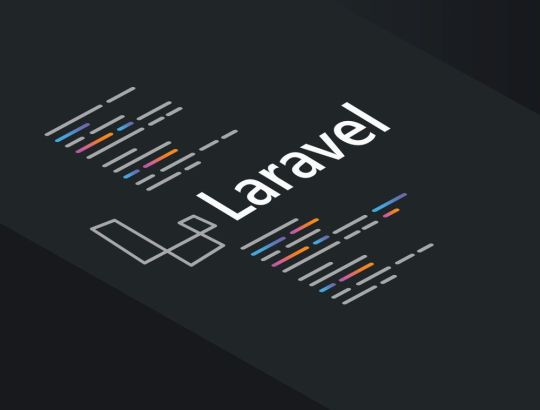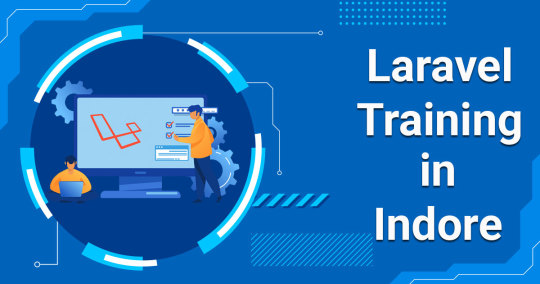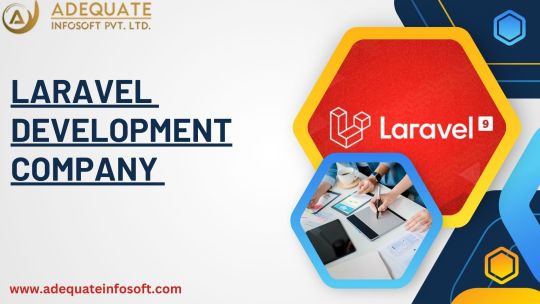#laravel framework development company
Explore tagged Tumblr posts
Text
Laravel 10 Livewire DataTable Pagination Package Tutorial
The Livewire DataTable Pagination packages make it easier to create dynamic and feature-rich data tables with pagination in Laravel 10. In this article, we will walk you through the steps of developing DataTable pagination in Laravel 10 using the Livewire package.
#laravel framework development company#laraveldevelopment#laravel tutorial#laravel framework#laravel#php tutorials#php development#php framework
0 notes
Text
Top 5 Common Database Design patterns in Laravel
In the world of Laravel development, a well-structured database is the bedrock of a robust and scalable application. While Laravel's Eloquent ORM provides a powerful abstraction layer for interacting with your data, understanding common database design patterns can significantly enhance your development process.
These patterns not only promote code organization and maintainability but also enable you to adapt your database structure to the unique needs of your application. By mastering these patterns, you can build efficient, reliable, and easily maintainable Laravel applications that can handle diverse data requirements.
1. Active Record Pattern:
This is the most common pattern used by Eloquent ORM in Laravel. It encapsulates database logic within model classes, allowing you to interact with the database using object-oriented methods.
Application
This pattern is well-suited for projects of any size and complexity. It simplifies database operations, making them easier to understand and maintain.
Example:

Advantages:
Simplicity: Easy to understand and implement.
Code Reusability: Model methods can be reused throughout your application.
Relationship Management: Built-in support for relationships between models.
Disadvantages:
Tight Coupling: Model logic is tightly coupled to the database, making it harder to test independently.
Complexity: Can become complex for large applications with complex data structures.
2. Data Mapper Pattern:
This pattern separates data access logic from domain logic. It uses a dedicated "mapper" class to translate between domain objects and database records.
Application
This pattern is useful for large-scale applications with complex domain models, as it allows for greater flexibility and modularity. It is particularly useful when working with multiple data sources or when you need to optimize for performance.
Example:

Advantages:
Flexibility: Easily change the database implementation without affecting business logic.
Testability: Easy to test independently from the database.
Modularity: Promotes a modular structure, separating concerns.
Disadvantages:
Increased Complexity: Requires more code and might be overkill for simple applications.
3. Repository Pattern:
This pattern provides an abstraction layer over the data access mechanism, offering a consistent interface for interacting with the database.
Application
This pattern promotes loose coupling and simplifies testing, as you can easily mock the repository and control the data returned. It is often used in conjunction with the Data Mapper pattern.
Example:

Advantages:
Loose Coupling: Decouples business logic from specific data access implementation.
Testability: Easy to mock repositories for testing.
Reusability: Reusable interface for accessing different data sources.
Disadvantages:
Initial Setup: Can require more setup compared to Active Record.
4. Table Inheritance Pattern:
This pattern allows you to create a hierarchical relationship between tables, where child tables inherit properties from a parent table.
Application
This pattern is useful for creating polymorphic relationships and managing data for different types of entities. For example, you could have a User table and separate tables for AdminUser and CustomerUser that inherit from the parent table.
Example:

Advantages:
Polymorphism: Enables handling different types of entities using a common interface.
Code Reusability: Reuses properties and methods from the parent table.
Data Organization: Provides a structured way to organize data for different types of users.
Disadvantages:
Increased Database Complexity: Can lead to a more complex database structure.
5. Schema-less Database Pattern:
This pattern avoids the use of a predefined schema and allows for dynamic data structures. This is commonly used with NoSQL databases like MongoDB.
Application
This pattern is suitable for projects that require highly flexible data structures, such as social media platforms or analytics systems.
Example:

Advantages:
Flexibility: Easily adapt to changing data structures.
Scalability: Suitable for high-volume, rapidly changing data.
High Performance: Efficient for specific use cases like real-time analytics.
Disadvantages:
Increased Complexity: Requires a different approach to querying and data manipulation.
Data Consistency: Can be challenging to maintain data consistency without a schema.
Choosing the Right Pattern:
The best pattern for your project depends on factors like project size, complexity, performance requirements, and your team's experience. It is important to choose patterns that align with the specific needs of your application and ensure long-term maintainability and scalability.
Conclusion:
This exploration of common database design patterns used in Laravel has shed light on the importance of strategic database structuring for building robust and scalable applications. From the simplicity of the Active Record pattern to the sophisticated capabilities of the Data Mapper and Repository patterns, each pattern offers distinct benefits that cater to specific project needs.
By understanding the strengths and applications of these patterns, Laravel developers can choose the optimal approach for their projects, ensuring a well-organized, efficient, and maintainable database architecture. Ultimately, mastering these patterns empowers you to create Laravel applications that are not only functional but also adaptable to evolving data requirements and future growth.
#laravel#laravel development company#laravel framework#laravel developers#database#design#coding#programming
4 notes
·
View notes
Text
Ultimate Guide to Choosing Between Laravel and Django for Your Next Web App

Building a web application is no small feat. It’s like assembling a spaceship — every component matters, and choosing the wrong framework can send your project into a black hole. At Kanhasoft, we’ve spent years crafting custom software solutions that feel like a secret superpower for our clients. Two of our favorite tools? Laravel and Django, the rockstars of web development frameworks. But which one is the best framework for your web app? Spoiler: there’s no one-size-fits-all answer, but we’re here to break it down so you can make an informed choice.
Whether you’re a startup dreaming of the next big app or an enterprise streamlining operations, this guide will compare Laravel vs Django across performance, scalability, security, and more. Let’s dive into the nitty-gritty and help you pick the perfect framework for your next project.
Why Laravel and Django? The Heavyweights of Web Development
Laravel (PHP-based) and Django (Python-based) are battle-tested frameworks loved by developers and businesses alike. Both power robust, scalable web apps, but they cater to slightly different needs. At Kanhasoft, a software development company with expertise in both, we’ve built everything from eCommerce platforms to data-heavy enterprise systems using these tools. So, why are they so popular?
Laravel: Known for its elegant syntax and rapid development, Laravel is a PHP framework that makes building feature-rich apps a breeze. It’s packed with tools like Eloquent ORM, Blade templating, and built-in authentication.
Django: The Python-powered Django is all about “batteries included,” offering a full-stack ecosystem with ORM, admin panels, and security features out of the box. It’s a favorite for data-driven and rapid-prototyping projects.
Performance: Speed That Keeps Up with Your Ambition
When it comes to performance, both Laravel and Django deliver, but their strengths differ. Laravel, built on PHP, shines in environments with high user traffic, like eCommerce platforms. Its caching tools (e.g., Redis, Memcached) and optimization features ensure snappy response times. At Kanhasoft, we’ve used Laravel to build custom software for marketplaces that handle thousands of transactions daily without breaking a sweat.
Django, on the other hand, leverages Python’s efficiency and excels in CPU-intensive tasks, like data processing or machine learning integrations. Its asynchronous capabilities (introduced in Django 3.1) make it a strong contender for real-time apps. For example, we’ve powered Django web development projects with complex analytics dashboards that crunch numbers in milliseconds.
Verdict: Choose Laravel for user-facing apps with heavy traffic. Go with Django for data-heavy or computation-intensive projects. Need both? A software development company like Kanhasoft can blend their strengths with microservices.
Scalability: Growing Without the Growing Pains
Scalability is where your web app proves it can handle success. Laravel’s modular structure and support for microservices make it a go-to for apps that need to scale horizontally. Think of platforms like Airbnb or Uber — Laravel’s ecosystem (with tools like Laravel Vapor) can support massive user bases. We’ve built scalable Laravel apps at Kanhasoft that seamlessly grew from MVP to enterprise-grade solutions.
Django’s scalability is equally impressive, thanks to its clean architecture and Python’s versatility. Companies like Instagram and Pinterest run on Django, proving it can handle billions of requests. Django’s ability to integrate with cloud platforms (e.g., AWS, Google Cloud) makes it ideal for startups planning to scale fast. Our custom software projects often use Django for rapid prototyping that evolves into robust systems.
Verdict: Both frameworks scale well, but Laravel is better for modular, user-centric apps, while Django suits data-driven, cloud-native systems. Let’s explore another critical factor: development speed.
Development Speed: From Vision to Victory
Time-to-market is a make-or-break factor for startups and enterprises alike. Laravel’s developer-friendly features — like pre-built authentication, routing, and Artisan CLI — accelerate development. Its vibrant community and packages (via Composer) mean you’re never starting from scratch. At Kanhasoft, we’ve used Laravel to deliver custom software in record time, empowering clients to launch ahead of competitors.
Django’s “batteries included” philosophy gives it an edge for rapid prototyping. Its built-in admin panel, form handling, and ORM let developers focus on business logic rather than boilerplate code. For Django web development, we’ve built MVPs in weeks, complete with admin dashboards that clients love tweaking themselves.
Verdict: Laravel is faster for feature-rich apps with complex frontends. Django wins for quick prototypes and data-heavy backends. Your timeline and team’s expertise will tip the scales.
Security: Keeping Your App Fortified
In today’s world, a single security breach can sink your app’s reputation. Laravel and Django both prioritize security, but their approaches differ. Laravel offers built-in protections like CSRF tokens, XSS prevention, and secure authentication. Its regular updates and active community keep vulnerabilities at bay. We’ve used Laravel to build secure eCommerce platforms that handle sensitive payment data with ease.
Django is a security powerhouse, with features like SQL injection prevention, CSRF protection, and automatic escaping of HTML. Its “secure by default” mindset makes it a favorite for industries like healthcare and finance. At Kanhasoft, our Django web development projects often include custom security layers for enterprise clients.
Verdict: Both are secure, but Django’s out-of-the-box protections make it slightly easier for beginners to avoid pitfalls. Laravel’s flexibility suits teams with strong security expertise.
Community and Ecosystem: Support That Powers Progress
A framework’s community can be your lifeline during development. Laravel’s ecosystem is massive, with thousands of packages on Packagist and a thriving community on forums like Laracasts. Need a payment gateway or API integration? Laravel’s got you covered. Our team at Kanhasoft leans on Laravel’s ecosystem to deliver custom software tailored to unique client needs.
Django’s community, while smaller, is equally passionate. Python’s vast ecosystem (e.g., libraries like NumPy, Pandas) makes Django a powerhouse for AI and data-driven apps. The Django REST Framework is a game-changer for API development, and we’ve used it to build seamless integrations for clients.
Verdict: Laravel’s ecosystem is broader for web app features, while Django’s Python roots give it an edge for AI and analytics. Choose based on your app’s niche requirements.
Kanhasoft’s Take: Making Technology Your Superpower
At Kanhasoft, we believe technology should feel like a secret superpower. Whether you choose Laravel or Django, our software development company can turn your vision into reality. Laravel’s elegance powers our eCommerce and marketplace projects, while Django’s versatility drives our AI and ERP solutions. Can’t decide? We’ve even combined both in microservices architectures for clients who want the best of both worlds.
Here’s the thing: the best framework for your web app depends on your goals. If you’re building a user-facing platform with complex features, Laravel’s speed and flexibility are hard to beat. If your app leans on data processing, AI, or rapid prototyping, Django’s ecosystem is your ally. Either way, partnering with a software development company like Kanhasoft ensures your app is built to succeed.
FAQs About Laravel vs Django
Q1: Which is better for startups, Laravel or Django? A: Laravel is ideal for startups needing feature-rich apps with quick market entry, thanks to its rapid development tools. Django suits startups focused on data-driven MVPs or AI integrations, offering fast prototyping and scalability.
Q2: Is Django more secure than Laravel? A: Both are secure, but Django’s “secure by default” features (e.g., automatic SQL injection prevention) make it slightly easier for beginners. Laravel offers robust security with proper configuration, ideal for experienced teams.
Q3: Can Laravel and Django be used together? A: Yes, in a microservices architecture. For example, Kanhasoft has built apps using Laravel for the frontend and Django for data-heavy backends, ensuring the best of both worlds.
Q4: Which framework is faster for web app development? A: Laravel accelerates development for complex, user-facing apps with tools like Artisan. Django is faster for prototypes and data-driven apps due to its built-in admin and ORM.
Q5: How do I choose the best framework for my web app? A: Consider your project’s goals, team expertise, and timeline. Laravel suits eCommerce or modular apps; Django excels in analytics or AI-driven projects. Consult a software development company like Kanhasoft for tailored advice.
Conclusion: Your Web App, Your Superpower
Choosing between Laravel and Django isn’t about picking a winner — it’s about finding the framework that makes your web app a powerhouse. At Kanhasoft, we’ve seen both frameworks transform ideas into reality, from sleek marketplaces to intelligent ERP systems. As a software development company, our mission is to make technology feel effortless, like a superpower you wield with confidence.
So, what’s your next step? Evaluate your project’s needs, weigh the strengths of Laravel vs Django, and let your vision guide you. Better yet, reach out to Kanhasoft for a free consultation. We’ll help you choose the best framework for your web app and build custom software that sets you apart. Let’s make your app the hero of your story — contact us today!
0 notes
Text
Why do you think Laravel is popular among developers?
Laravel is popular among developers for a variety of reasons, both technical and practical. Here's why it stands out:
Elegant Syntax
Laravel offers clean, readable, and expressive syntax, making development faster and more enjoyable.
MVC Architecture
It follows the Model-View-Controller (MVC) pattern, helping developers keep code organized, scalable, and maintainable.
Built-in Tools and Features
Laravel includes powerful built-in tools like Blade Templating Engine, Eloquent ORM for database interaction, Artisan CLI for automating tasks, Routing, Authentication, Queues, Mail, and more
Rapid Application Development
Laravel comes with tools that help in quick prototyping and faster project completion.
Security
It offers robust security features like CSRF protection, password hashing, and SQL injection prevention right out of the box.
Strong Ecosystem
Laravel’s ecosystem includes tools like Laravel Forge (server deployment), Laravel Vapor (serverless deployment), Laravel Nova (admin panel), Laravel Mix (asset compilation)
Huge Community Support
Laravel has a large, active community and excellent documentation, which makes it easy to find help and resources.
Testing Made Easy
Laravel is built with testing in mind and includes PHPUnit support by default, helping developers ensure quality code.
Scalability
With support for microservices and integrations with cloud services, Laravel apps can scale effectively for enterprise use.
API-Ready
Laravel makes it easy to build RESTful APIs or even use it purely as a backend API service.
0 notes
Text
Elevate your web development projects with our Laravel development services. Our team of experienced developers specializes in building high-performance web applications using the Laravel framework. From custom web solutions to e-commerce platforms, we deliver robust and scalable solutions tailored to your needs.
0 notes
Text
#digital aptech#laravel#laravel web development services#laravel development services#laravel development company#laravel framework#web development#web development company#web development services#web developers
0 notes
Text

Laravel development company is robust and reliable whereas PHP in comparison to Laravel is slightly outdated and slow. Additionally, Laravel is an open-source framework that follows MVC architecture and is quite fast hence it is widely used to design custom websites and applications
0 notes
Text
How To Create RSS Feed in Laravel 10 Example Tutorial
RSS (Really Simple Syndication) feeds are a great way to share content and updates from your Laravel 10 application with users and external services. This tutorial will walk you through the process of building an RSS feed in Laravel 10.
#laravel tutorials#laravel tutorial#laravel framework#laravel framework development company#laravel#php tutorials#php development#php
0 notes
Text
Laravel with our comprehensive guide crafted by RND experts. From beginner basics to advanced techniques, master Laravel development and build robust web applications efficiently.
1 note
·
View note
Text

Laravel Development Company
Elevate your digital presence with our premier Laravel development services. As a seasoned Laravel development company, we specialize in creating bespoke, cutting-edge solutions tailored to meet your unique business needs. With a meticulous focus on quality, efficiency, and innovation, we deliver robust web applications, scalable e-commerce platforms, and dynamic web portals powered by Laravel's unparalleled versatility.
Our team of Laravel experts boasts extensive experience in harnessing the full potential of this acclaimed PHP framework, ensuring seamless integration, exceptional performance, and unmatched reliability for your projects. From conceptualization to deployment, we adhere to industry best practices, leveraging Laravel's rich feature set to deliver solutions that exceed expectations.
Read more https://www.ibrinfotech.com/technologies/web-development/laravel-web-development-services-
#laravel development company#Laravel web development services#Laravel Development Companies#php framework#Laravel eCommerce Development#Laravel Website Development#Laravel Enterprise Services#Laravel CMS Development#website development process
0 notes
Text
Significant Trends to Watch in 2024 for Using the Laravel Framework
Hey there, fellow tech enthusiasts As we dive headfirst into 2024, it’s time to put on our digital binoculars and scout out the exciting trends on the horizon for Laravel development. Whether you’re a seasoned developer, a curious coder, or just someone who enjoys nerding out over tech (like me), these trends are worth keeping an eye on.

1. Laravel 11 Release: The Next Frontier
Ah, Laravel – the trusty steed that has carried us through countless web projects. Well, saddle up, my friends, because Laravel 11 is on the horizon! With each new version, Laravel sprinkles a little magic dust on our development process. What can we expect? Enhanced performance, smoother workflows, and probably a unicorn or two. Okay, maybe not the unicorn, but you get the idea. Keep your GitHub notifications on high alert for this one.
2. Microservices and Laravel: A Match Made in Code Heaven
Microservices – the cool kids at the backend party. These modular, independent services are like Lego bricks for developers. In 2024, Laravel is giving them a warm hug. Imagine building your app with tiny, specialized components that play nicely together. It’s like having a team of Avengers – each hero with their unique powers (and no egos). So, if you’re dreaming of scalable, maintainable applications, hop aboard the microservices train.
3. Serverless Laravel Applications: Less Server, More Awesome
Servers? Ain’t nobody got time for that! Enter serverless computing. In 2024, Laravel is dipping its toes into the serverless pool. Picture this: you write code, deploy it, and voilà – your app runs without worrying about servers. It’s like having a personal butler for your backend. So, if you’re tired of server management, grab your monocle and explore the serverless side of Laravel.
4. AI and Machine Learning: Laravel Gets Brainy
Artificial Intelligence and Machine Learning – the Hermione Granger of tech. In 2024, Laravel is cozying up to these brainy companions. Imagine integrating AI chatbots, recommendation engines, or predictive analytics seamlessly into your Laravel app. Suddenly, your app becomes smarter than your neighbor’s cat (no offense to the cat). So, if you’re curious about AI’s magical powers, wave your wand – I mean, hire Laravel developer.
5. Real-Time Features: Instant Gratification, Anyone?
We live in an impatient world. Waiting for a page to reload? Nah. In 2024, Laravel is jazzing up its real-time capabilities. Think live chat, notifications, and dynamic updates – all without hitting that pesky refresh button. It’s like having a personal genie who grants your wishes instantly (minus the three-wish limit). So, if you want your users to feel like wizards, sprinkle some real-time magic into your Laravel app.
6. Enhanced Security Measures: Fort Knox for Your Code
Security – the unsung hero of web development. In 2024, Laravel is tightening its belt (or should I say, hashing its passwords?). Expect beefed-up security features, encryption galore, and a fortress around your app. It’s like having a cyber bodyguard – always vigilant, never taking coffee breaks. So, if you’re serious about protecting your users’ data, high-five a Laravel developer and say, “Encrypt all the things!”
7. Frontend Development Integration: The Full-Stack Tango
Laravel isn’t just about backend sorcery; it’s also a smooth dancer on the frontend floor. In 2024, expect more tools, packages, and sweet moves for building full-stack applications. Vue.js, Livewire, and Inertia.js – these are your dance partners. Together, they’ll waltz through your app’s UI like Fred Astaire and Ginger Rogers (minus the top hats). So, if you want to tango with both ends of the stack, grab your Laravel partner and hit the dance floor.
In Conclusion: The Laravel Adventure Awaits
As we embark on this tech journey through 2024, remember that Laravel is more than just code – it’s a community, a mindset, and a magical portal to web wonders. So, whether you’re a seasoned Laravel wizard or a curious apprentice, keep your eyes peeled for these trends. And hey, if you’re thinking, “I need a Laravel development company,” just whisper it to the wind – Laravel hears you.
FAQs:
Q: What are the key trends to watch in Laravel development for 2024?
A: Several key trends are expected to shape Laravel development in 2024:
Increased Modularity: Breaking down complex applications into smaller, reusable components for better maintainability and scalability.
Tailwind CSS Dominance: Continued rise of Tailwind CSS as the preferred framework for building responsive UIs thanks to its utility-first approach that aligns well with Laravel's modularity.
Enhanced Security: Growing focus on robust security measures as cyber threats become more sophisticated. Laravel itself offers strong security features, and developers are expected to leverage them effectively.
Microservices Architecture: Adoption of microservices architecture for building highly scalable and maintainable applications, with Laravel expected to provide improved support for this approach.
AI and Machine Learning Integration: Integration of AI and ML functionalities into web applications for features like personalization and data-driven insights. Laravel's expressiveness can ease the integration of these technologies.
Q: How will increased modularity benefit Laravel development?
A: By breaking down applications into smaller, well-defined modules, developers gain several advantages:
Improved code maintainability: Easier to understand, modify, and test individual components.
Enhanced collaboration: Enables larger teams to work on different modules simultaneously.
Greater code reusability: Modules can be reused across different projects, saving development time.
Q: Why is Tailwind CSS expected to remain dominant with Laravel?
A: Tailwind's utility-first approach aligns well with Laravel's focus on modularity and component-based development. It allows developers to quickly build user interfaces with pre-defined classes without writing extensive CSS code, improving efficiency and consistency.
Q: What can developers do to enhance the security of Laravel applications?
A: Several practices can strengthen the security of Laravel applications:
Regularly update Laravel and its dependencies to benefit from security patches.
Implement secure coding practices to avoid common vulnerabilities.
Use Laravel's built-in security features like authorization and authentication mechanisms.
Stay informed about emerging security threats and update security measures accordingly.
Q: How will Laravel support the adoption of microservices architecture?
A: While Laravel itself is not a microservices framework, it is expected to offer improved support for this approach in 2024. This may include:
Enhanced tooling for managing microservices within a Laravel ecosystem.
Improved documentation and best practices for building microservices with Laravel.
Seamless integration with containerization technologies like Docker and orchestration platforms like Kubernetes.
0 notes
Text
Laravel Training in Indore | Laravel Internships - Infograins TCS
Are you passionate about web development and looking to embark on a rewarding career journey? Laravel, a powerful PHP framework, could be your ticket to success. In the vibrant city of Indore, we offer top-notch Laravel training in Indore that equips you with the skills and knowledge needed to excel in the world of web development. In this blog post, we'll explore the modules covered in our Laravel training program and how we can help you kickstart your career in this dynamic field.

Understanding Laravel:
What is Laravel?
Laravel is an open-source PHP web framework known for its elegant syntax, robust features, and developer-friendly tools. It simplifies the development process by providing a clean and expressive syntax, making it an ideal choice for building modern, scalable web applications.
Why Laravel?
Laravel has gained immense popularity in the web development community due to its developer-friendly nature, comprehensive documentation, and a rich set of features such as routing, Eloquent ORM, Blade templating engine, and more. It enables developers to build sophisticated web applications with ease.
Our Laravel Training Modules:
1. Introduction to Laravel:
Overview of Laravel and its ecosystem.
Installation and configuration.
2. Laravel Basics:
Understanding MVC architecture.
Routing and controllers.
Blade templating engine.
3. Database Management with Eloquent ORM:
Database migrations and seeding.
Eloquent relationships.
Query building with Eloquent.
4. Building Robust Applications:
Middleware and authentication.
Form handling and validation.
Error handling and logging.
5. Advanced Features:
RESTful API development.
Task scheduling and queue management.
Testing with PHP Unit.
6. Real-world Projects:
Hands-on projects to apply learned concepts.
Collaborative coding sessions.
7. Career Guidance:
Resume building and interview preparation.
Industry insights and trends.
Why Choose Our Laravel Training?
Experienced Instructors : Our trainers are seasoned professionals with extensive experience in Laravel development, ensuring you receive high-quality education.
Hands-on Learning : Practical sessions and real-world projects are integral to our training program, allowing you to apply theoretical knowledge in a practical setting.
Career Support : We don't just stop at training; we provide career guidance, helping you build a strong foundation for your web development career.
Community Engagement : Join a community of like-minded individuals, fostering collaboration and networking opportunities within the Laravel ecosystem.
Conclusion:
If you're eager to step into the world of web development and carve a niche for yourself, our Laravel training in Indore is your gateway to success. Embrace the power of Laravel and embark on a journey of creating innovative and scalable web applications. Your future in web development starts here!
Enroll in our Laravel training program today and unlock a world of opportunities in the dynamic field of web development!
#laravel#it training institute#software#blockchain#webdevelopment#app development#laravel development company#laravel framework#hire laravel developers
0 notes
Text
Laravel Development Company
Elevate your web development projects with our Laravel development services. Our team of experienced developers specializes in building high-performance web applications using the Laravel framework. From custom web solutions to e-commerce platforms, we deliver robust and scalable solutions tailored to your needs.
#laravel#it services#it company#it support#laravel development company#laravel development services#laravel development agency#laravel development team#laravel framework
0 notes
Text
#digital aptech#laravel#laravel development company#laravel development services#laravel development team#laravel development agency#laravel framework#laravel web development services#laravel web development company#laravel website development
0 notes
Text

Laravel development service is a popular PHP framework used for building web applications. It provides a simple, elegant syntax and a variety of helpful tools and features to streamline the development process. Some of its key features include a powerful ORM (Object-Relational Mapping) called Eloquent for database interactions, a built-in authentication system, routing, middleware support, and a templating engine called Blade.
0 notes